|
Alma Tadema.org, welcome & enjoy!

|
|
Here are all the paintings of PISANELLO 01
| ID |
Painting |
Oil Pantings, Sorted from A to Z |
Painting Description |
| 57228 |
 |
A portrait of a young princess |
mk255 about 1435-1440 about 0.43 meters high, 0.30 meters wide. Paris, the Louvre |
| 1568 |
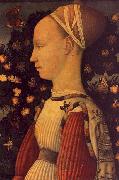 |
Ginepro d'Este |
c1440 Musee du Louvre, Paris |
| 23449 |
 |
Ginepro d'Este (nn03) |
c 1440 Tempera on panel 43 x 30 cm 17 x 12 in Musee du Louvre Paris |
| 25884 |
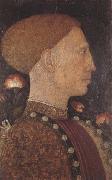 |
Lionello d'WEste |
28x19cm
Tempera on panel
Bergamo,Accademia Carrara di Bells Arti
|
| 40187 |
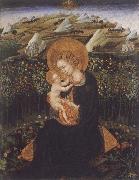 |
Madonna of Humility |
mk156
c.1442
Tempera on panel
62x48.8cm
|
| 19891 |
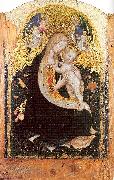 |
Madonna with a Quail |
1420-22
Wood panel
Museo di Castelvecchio, Verona. |
| 8551 |
 |
Portrait of a Princess of the House of Este vhh |
1436-38
Tempera on wood, 43 x 30 cm
Mus??e du Louvre, Paris |
| 8552 |
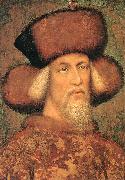 |
Portrait of Emperor Sigismund of Luxembourg iug |
c. 1433
Tempera on vellum stuck on wood, 64 x 49 cm
Kunsthistorisches Museum, Vienna |
| 19892 |
 |
Portrait of Ginerva d'Este |
Tempera on wood
Mus??e du Louvre, Paris. |
| 20020 |
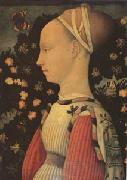 |
Portrait of Ginevra d'Este (mk05) |
Wood 17 x 12''(43 x 30 cm)Entered the Louvre in 1893 |
| 55939 |
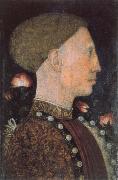 |
Portrait of Leonello d este |
mk247
1441,tempera on panel,11x7 in,28x18 cm,galleria accademia carrara,bergamo,ltaly |
| 8550 |
 |
Portrait of Leonello dEste fgg |
1441
Tempera on wood, 28 x 19 cm
Accademia Carrara, Bergamo |
| 19893 |
 |
Portrait of Lionello d'Este |
Approx. 1441
Tempera on wood
Accademia Carrara, Bergamo. |
| 33338 |
 |
Portrait of Lionello d'Este |
mk86
1441
Tempera on wood
28x19
Bergano,Accademia Carrara
|
| 21171 |
 |
Portrait of Lionello d'Este (mk08) |
Tempera on wood
28x19cm
Bergamo.Accademia Carrara |
| 1573 |
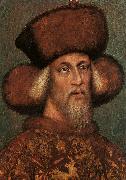 |
Portrait of the Emperor Sigismund |
1432-33 Art History Museum, Vienna |
| 32526 |
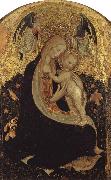 |
Recreation by our Gallery |
mk79
About 1476
|
| 8553 |
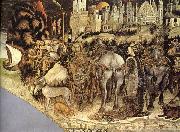 |
Saint George and the Princess of Trebizond (detail) sg |
1436-38
Fresco
Pellegrini Chapel, Sant'Anastasia, Verona |
| 32474 |
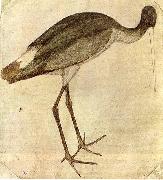 |
Stork |
1430s
Drawing |
| 52199 |
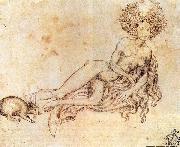 |
The Luxury |
1420s |
| 42892 |
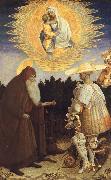 |
The Virgin and Child with Saint Anthony Abbot |
mk170
circa 1445
Tempera on poplar
47x29.2cm
|
| 8554 |
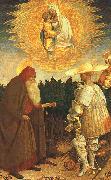 |
The Virgin and Child with Saints George and Anthony Abbot sgh |
mid 1400s
Panel
National Gallery, London |
| 31368 |
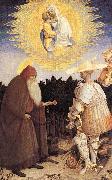 |
The Virgin and Child with St. George and St. Anthony the Abbot |
nn07
|
| 33339 |
 |
The Virgin and Child with the Saints George and Anthony Abbot |
mk86
c.1445
Tempera on wood
47x29cm
London,National Gallery
|
| 21172 |
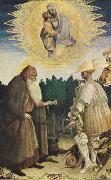 |
The Virgin and Child with the Saints George and Anthony Abbot (mk08) |
c.1445
Tempera on wood
47x29cm
London,National Gallery |
| 1571 |
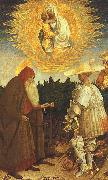 |
The Virgin and the Child with Saints George and Anthony Abbot |
National Gallery, London |
| 19894 |
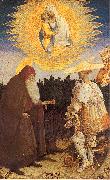 |
The Virgin Child with Saints George Anthony Abbot |
1445
National Gallery, London.
|
| 40186 |
 |
The Vision of Saint Eustace |
mk156
1438-1442
Tempera on panel
54.8x65.5cm
|
| 42891 |
 |
The Vision of Saint Eustace |
mk170
circa 1435
Tempera on wood
54.5x65.5cm
|
| 33337 |
 |
The Vision of St Eustace |
mk86
c.1435
Tempera on wood
55x65cm
London
National Gallery
|
| 21170 |
 |
The Vision of St Eustace (mk08) |
c.1135
Tempera on wood.
55x65cm
London,National Gallery |
| 1567 |
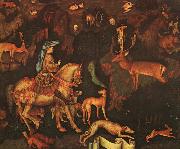 |
The Vision of St.Eustace |
National Gallery, London |
| 43582 |
 |
Three Cows |
c. 1430-1440.
Silver point, pencil and pen,
17.6 x 22.6 cm |
| 30415 |
 |
Tournament |
mk68
Fresco
Mantua
Ducal Palace
1446-1447
|
| 53660 |
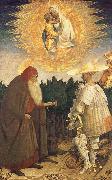 |
Virgin and child with St. Goran and St Antonius |
mk234
1400-century middle
47x29cm |
| 25885 |
 |
Young Lady of the Este Family (Mk45) |
c.1433
Tempera on panel
43x30
cm
Paris,Musee du Louvre
|
|
|
| PISANELLO
|
| Italian painter (b. 1395, Pisa, d. 1455, Roma).
known professionally as Antonio di Puccio Pisano or Antonio di Puccio da Cereto, also erroneously called Vittore Pisano by Giorgio Vasari, was one of the most distinguished painters of the early Italian Renaissance and Quattrocento. He was acclaimed by poets such as Guarino da Verona and praised by humanists of his time who compared him to such illustrious names as Cimabue, Phidias and Praxiteles. He is known for his resplendent frescoes in large murals, elegant portraits, small easel pictures, and many brilliant drawings. He is the most important commemorative portrait medallist in the first half of the 15th century. He was employed by the Doge of Venice, the Pope in the Vatican and the courts of Verona, Ferrara, Mantua, Milan, Rimini, and by the King of Naples. He stood in high esteem of the Gonzaga and Este families. He had many of his works wrongly ascribed to other artists such as Piero della Francesca, Albrecht Derer and Leonardo da Vinci, to name a few. While most of his paintings have perished, a good many of his drawings and medals have survived. His life is somewhat shrouded in mystery. He was born between 1380 and 1395 and died between 1450 and 1455 (probably between 14 July and 8 October 1455). He was a native of Pisa but spent his early years in San Vigilio sul Lago in the territory of Verona. He was probably given his early training by a Veronese painter (perhaps Altichiero or Stefano da Verona) as his early style is in the tradition of veronese painting. Between 1415 and 1420, he was the assistant of the renowned painter and illuminator Gentile da Fabriano from whom he acquired his refined, delicate, detailed style. Pisanello also acquired from him a taste for precious materials and beautiful fabrics that can be found in his later paintings. The frescoes in the Doge's Palace at Venice, on which they worked together, have perished as well as the frescoes in the Basilica of St. John Lateran and the palaces of Mantua and Pavia. In 1422, he was reported to be in Mantua in the service of young Ludovico Gonzaga, son of the Marchese of Mantua Gianfrancesco Gonzaga. He continued to work for the Gonzaga family till the 1440s. Giorgio Vasari, an artist and biographer of the Italian Renaissance, states that Pisanello also worked in the workshop of Andrea del Castagno, author of the painted equestrian monument of Niccole da Tolentino (1456) in the Cathedral in Florence. He must also have known Paolo Uccello, the painter of the Battle of San Romano with its many horses. Pisanello's love of drawing horses probably finds its origin in this relationship. But as there is so much unknown of his life, this attribution by Vasari is not reliable and may only be a legend. His Madonna and Quail, now in the Museo di Castelvecchio in Verona, is signed by "Antonius Pisanus". It is tentatively dated at c. 1420. The style is a blend of the styles of Gentile da Fabriano and Stefano da Verona. This might show that Pisanello was also a pupil of the latter in Verona. Pisanello stayed again in Verona in 1424. However, according to some scholars, he painted frescoes about hunting and fishing and jousts in Pavia the same year. These were commissioned by the Duke of Milan Filippo Maria Visconti. There is no trace of these frescoes left. Back in Mantua with the Gonzagas between 1424 and 1426, he painted one of his important surviving works: the fresco Annunciation in San Fermo, Verona. It was used to embellish the funeral monument of Nicole di Brenzoni by the Florentine sculptor Nanni di Bartolo. When Gentile da Fabriano died in Rome between August and October 1427, his work at the Basilica of St. John Lateran was unfinished. Pisanello completed the frescoes of his former master between 1431 and 1432. All these frescoes were destroyed when the basilica was rebuilt in the 17th century by Francesco Borromini. The Kupferstichkabinet in Berlin has a pale sketch of this fresco, drawn by Borromini. While in Rome, he became more and more influenced by the classical style of Renaissance art. His drawings are generally prized as jewels of the quattrocento, and are wonderful examples of the elegant garb of the time, including spectacular hats. In contrast with his contemporaries, his drawings are not drafts for future paintingings but are autonomous work of art. He compiled several books of drawings, detailed and accurate studies of fauna and flora drawn with a poetic naturalism, and elegant costumes. Pisanello traveled to several Italian cities and was introduced to a number of courts. He stayed for a while in Florence. In this period he painted two important portraits: Emperor Sigismund, now in the Kunsthistorisches Museum, Vienna (but the attribution is still contested) and Portrait of a Man (now in the Palazzo Rosso, Genoa). He returned to Verona between 1433 and 1438. His fresco masterpiece from this period is Saint George and the Princess of Trebizond (1436-38) at the Pellegrini Chapel, Sant'Anastasia, Verona. It had to be restored after water seepage badly damaged the fresco at the end of the 19th century. He prepared for this painting with a large number of drawings. Many of these famous drawings are on display in the Louvre, Paris. From 1435, Pisanello became more and more interested in portraiture and medalmaking. He was introduced to Leonello d'Este, Marquess of Ferrara. His famous Portrait of an Este Princess dates from this period. His Vision of Saint Eustace, now at the National Gallery in London, long ascribed to Albrecht Derer because of its perfection of this very fine panel, shows most animals in profile or defined poses with miniature-like delicacy. The story in this small painting (egg tempera on wood) is probably only a pretext for showing "noble" animals (horses, hunting dogs, stag, bear...) and the most noble creature of all: the hunting courtier. In 1438, the Council of Basel negotiated with the Byzantine Emperor John VIII Palaiologos. On this occasion Pisanello struck a commemorative medal of the emperor. He also made some drawings with portraits of the emperor and his retinue (on display at the Louvre, Paris), suggesting
|
|
 All the Alma Tadema's Oil Paintings
All the Alma Tadema's Oil Paintings

Supported by oil paintings and picture frames

Copyright Reserved
|


